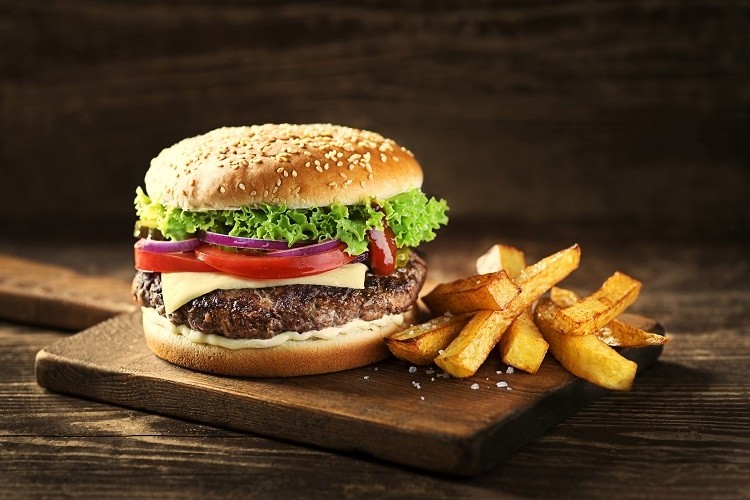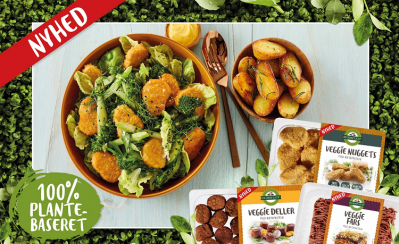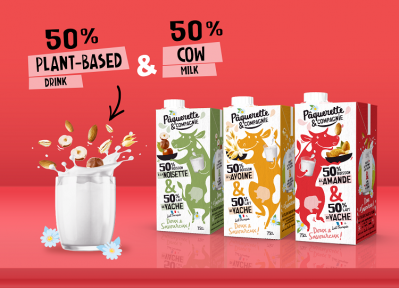Why do some ‘hybrid’ products make the cut, while others get the chop?

So-called hybrid products, whereby a food item contains two or more distinct sources of protein, have the potential to significantly reduce meat consumption in developed markets.
The protein sources in question could come from plants, animal cells, algae, conventional meat, mycoprotein, or from plant molecular farming.
As it stands, the most common ‘hybrid’ products on supermarket shelves contain a blend of conventional meat and plant-based ingredients. This is largely due to regulatory barriers and formulation challenges associated with some novel protein sources.
However, a short stroll along a retail aisle will quickly reveal to any flexitarian or reducetarian that this new category has yet to take off. Indeed, some such products entering the market with high hopes, have since been withdrawn.
At the recent Alt Protein Conference by Protein Directory and Cell Agri, ‘food futurist’ Tony Hunter suggested this may have less to do with the taste, texture, and functionality of the hybrid category, and more to do with how these products are marketed to consumers.
The benefits of blends
Consumers may choose to consume hybrid meat and plant-based products, over conventional meat-based counterparts, for a variety of reasons.
To start with, the hybrid concept is expected to appeal to the flexitarian or reducetarian consumer, who is actively looking to reduce their meat intake. According to a 2020 report produced by consultancy New Nutrition Business, so-called hybrid products could address both flexitarian’s good intentions and their desired product characteristics.
“A hybrid or blended strategy gives flexitarian consumers permission to indulge in favourite foods like meat, dairy and bakery – they can eat them and feel no guilt,” suggested Julian Mellentin, director of New Nutrition, at the time.
Shoppers may also be looking to swap out meat products, such as burgers or sausages, for hybrid alternatives for the environmental benefits they offer. Occupying 70% of agricultural land, animal agriculture is responsible for 14.5% of global GHG emissions, is a key factor in biodiversity loss, freshwater use, and pollution.
“People are coming to realise just the contribution to greenhouse gas (GHG) emissions and resource usage that our current food system products and the effects it has on the globe,” Hunter told the alt protein event.
Animal welfare is another growing concern amongst consumers, as is health and nutrition. It’s ‘generally agreed’ that having ‘plenty of plant-based foods’ in your diet is a ‘good thing’, we were told.
Of course, depending on where the consumer in question is located, the motivations behind opting for a hybrid product will be different. “There is no one-size-fits-all for a hybrid product…localisation really is the key,” continued Hunter.
Some hybrid products thrive…
Globally, ‘quite a wide range’ of hybrid products are currently on the market. Some have entered the market and established somewhat of a foothold.
In Europe, Danish Crown’s 50/50 range is one such example. In 2019, the Danish pork and beef producer developed hybrid mince products – containing 50% meat and 50% vegetables – targeting families who ‘want to cut down slightly’ on their meat intake.
The original two SKUs came in beef and pork varieties, with different vegetables in each. “Beef and pork taste slightly different, and the vegetables need to complement these variations in flavour: ‘Grønt & Gris (vegetables and pork) contains carrots, peppers and chickpeas, while kidney beans have been used instead of carrots in ‘Grønt & Okse’ (vegetables and beef),” explained Kamilla Wetke, senior brand manager at Danish Crown at the time.
In the US, another example lies in Applegate Farms’ Well Carved range, which launched in May last year.
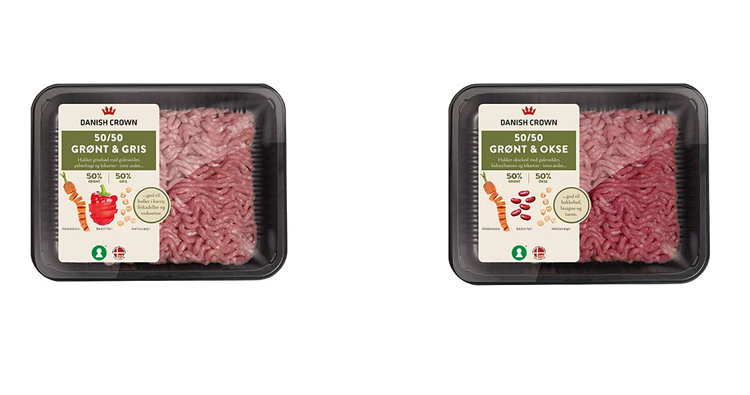
The organic meat brand introduced the new line of blended burgers and meatballs – which combined meat with whole vegetables, legumes and grains – to target consumers ‘mindful of their meat intake’ and its ‘nutritional, ethical and environmental impact’.
An independent review performed by HowGood in 2020 estimated that the Well Carved Grass-Fed Organic Beef Burger has 50% fewer GHG emissions compared to a conventional all-beef burger patty. A nutritional analysis also showed that Well Carved burgers and meatballs have fewer calories, fat and saturated fat than their conventional counterparts.
“Half the GHG emissions might not be as small as an ultra-processed soy burger, but with the Well Carved beef burger, you’re getting real, organic, grass-fed beef, up to 1/3 cup of organic vegetables and a truly delicious burger,” said Applegate president John Ghingo at the time.
Why do others struggle to survive?
Ghingo’s statement talks to a growing consumer trend: one centred around ‘natural’ and ‘clean’ products, rather than ‘ultra-processed’ alternatives.
This trend, food futurist Hunter suggested, could well be a factor in these products’ successes. Both blend conventional meat with vegetables, legumes, and/or grains, which feed into the ‘natural’ and ‘clean’ ideals of today’s shoppers.
For Hunter, the same cannot be said for all hybrid products on the market – or indeed, products that have failed to pique consumer interest, and as a result, been withdrawn.
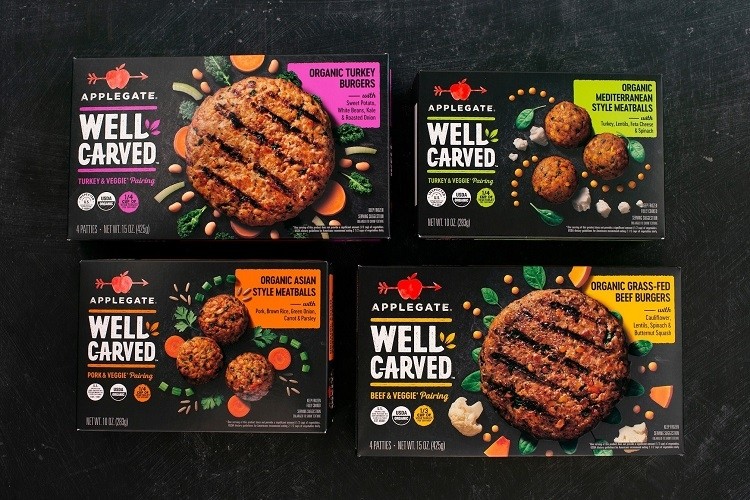
Meat processor Tyson Foods, for example, launched its blended meat and plant-based line in 2019. The range, sold under its Raised & Rooted brand, included a burger alternative made from Angus beef and isolated peat protein.
In late 2020, Tyson decided to discontinue the Raised & Rooted Blend burger, instead deciding to continue to develop exclusively plant-based products under the same brand.
Homing in on the term ‘isolated pea protein’ displayed front-of-pack, Hunter suggested to delegates the term “perhaps gives us a clue as to why this wasn’t particularly successful and had to be withdrawn”.
Another example, this time in the UK, also follows Hunter’s line of thinking. In 2019, BrewDog launched its Hybrid Burger into foodservice. The offering was made up of 50% Beyond Meat and 50% ‘sustainably-reared’ beef.
BrewDog’s Hybrid Burger is no longer on the menu. According to Hunter, the product just ‘didn’t sell’.
So why did BrewDog’s and Tyson Foods’ products fail? “Let’s have a look at what survived,” the food futurist continued. “The products that are still going and being released and conventional meat with vegetables. The ones that failed: meat and plant proteins.”
This poses the question: is it all in the marketing? Hunter suggested this could well be the case: “It’s really important to realise and stress, that the way these products are presented to…the consumer is extremely important…”
